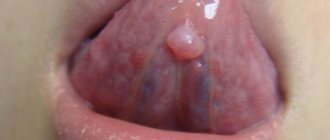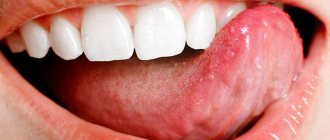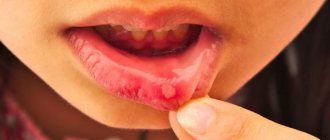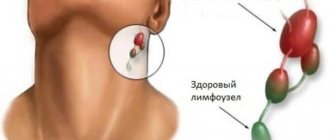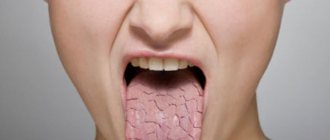June 01, 2020
Cheilitis is an inflammatory process that affects the border, mucous membrane and skin of the lips. The disease has a long-term recurrent nature.
Cheilitis is an inflammatory process that affects the border, mucous membrane and skin of the lips. The disease has a long-term recurrent nature. In young people, the course is more favorable and self-healing is possible. In old age there is a risk of leukoplakia and malignancy.
What is cheilitis
This is a collective term for a whole group of diseases that have one thing in common - inflammation of the red border of the lips. In clinical practice, it is customary to distinguish several forms, which is why the symptoms of cheilitis in adults or children depend.
The inflammatory process can be long-lasting, persist for weeks, or appear and disappear. By the way, cheilitis in adults often goes away on its own, but in the elderly or children it almost always requires drug treatment.
Important! Some forms of cheilitis are precancerous forms of inflammation.
Causes of cheilitis in adults
The causes and predisposing factors for development depend on the form of cheilitis in adults, whether it is a primary disease or a symptom of a systemic one. In general, the following causes of cheilitis in adults can be identified:
- Dermatoses. In this case, this is a secondary disease - a symptom of lichen planus, psoriasis and numerous skin diseases.
- Aggressive factors. Exposure to wind, UV rays, substances in cosmetics, etc.
- Allergic reactions. Allergic inflammation can be caused by components of cosmetics, certain procedures, food, etc.
- Cheilitis as a manifestation of other diseases. This could be neuritis of the facial nerve, hypovitaminosis. Cheilitis can also be a consequence of long-term use of medications, surgeries, cosmetic procedures, for example, shape correction, lip tattooing, etc.
Demodicosis
Causes of demodicosis on a person’s face and treatment regimen for this disease
Lips peel from the inside
This problem is much less common than detachment of the upper part of the epidermis on the outside of the lips. However, it also brings severe discomfort and requires close attention. The skin in the mouth may peel due to:
- Allergic reactions (to new toothpaste, medications, food).
- Dental ailments (tartar, periodontal disease, gingivitis, caries, etc.).
- Previous burns (thermal or chemical).
- Serious diseases (autoimmune diseases, cancer, infections). With oncology, some area of disturbance may appear in the mouth, which bothers the person constantly (it does not hurt much, but does not heal). And infectious and autoimmune diseases usually manifest themselves as serious health problems, pain, large ulcers and other symptoms that are difficult to ignore.
The sudden appearance of skin peeling in the mouth is a reason to quickly consult a doctor. This is a rather atypical symptom that should not be ignored.
Symptoms of cheilitis in adults
The manifestations of the disease largely depend on its form.
Cheilitis due to endocrine diseases. In this case, the main symptom is dryness and the formation of deep cracks. In general, the following symptoms are characteristic of cheilitis:
- burning;
- formation of crusts on the lips;
- itching;
- in some cases soreness;
- edema.
Glandular cheilitis. It is based on changes and inflammation of the minor salivary glands. It is characterized by dry lips, which can be easily eliminated with the help of decorative and medicinal cosmetics. Later, as it progresses, deep cracks appear, which may even bleed. The situation is complicated by constant licking of the lips in order to moisten the red border.
Contact-allergic cheilitis. It develops after exposure to an allergen. Cosmetics, toothpaste, etc. can provoke a reaction. The main symptoms in this case include:
- severe itching;
- burning;
- edema;
- redness of the red border and mucous membrane.
In general, cheilitis is characterized by burning, crusting on the lips, itching, swelling, and sometimes pain. Photo: Commons.wikimedia, James Heilman, MD
With systematic exposure to an allergen, bubbles form, and after opening, ulcers and erosions appear.
Actinic cheilitis. It is also called meteorological and is based on increased sensitivity to natural and weather conditions. Consequently, symptoms are more likely to appear during strong winds, frost or scorching sun. The main symptoms are dryness, redness; in complex cases, exudative forms develop with the formation of painful ulcers and erosions. And it is precisely this form, under a combination of circumstances, that more often turns into oncopathology.
Atopic cheilitis. It is directly related to dermatitis of the same name, and the appearance of symptoms can be triggered by the use of cosmetics, nutrition, infections and waste products of pathogens. Typical manifestations are itching, peeling, redness, crusting, etc.
Macrochelitus. This is a special form of inflammation that manifests itself against the background of neuritis of the facial nerve. Characteristic symptoms include lip enlargement, itching, swelling of other parts of the face, and changes in lip shade. The lesion may affect one or both lips, spread to the cheeks and parts of the face.
Cheilitis due to hypovitaminosis. The clinical picture in this case will depend on the deficiency of a particular vitamin. The main symptoms are peeling, formation of cracks, swelling, redness.
Contact dermatitis
How contact dermatitis manifests itself and how it can be cured: KP help
Why does the skin on my lips peel off?
Healthy lips are covered with fairly elastic skin, smooth, without cracks or flaking. Its condition can change under the influence of a variety of factors:
- Having a bad habit. With constant licking or biting, the skin of the lips is injured, begins to dry out and peel off. As a result, it may begin to peel off. Having peeled off, the skin will hang, and if you continue to bite off the peeling pieces of the epidermis, the situation can get very worse. The lips will become covered with bloody crusts and will hurt.
- Hypovitaminosis. Insufficient intake of various nutrients into the body is fraught with deterioration in overall health and can affect the skin of the lips. In addition, a person may be bothered by weakness, fatigue, dry skin in other parts of the body, etc.
- Impact of aggressive external factors. In particular, the skin can exfoliate and peel off the lips after burns (thermal or chemical). This problem is often faced by girls who neglect safety rules and open bottles of medicine with their teeth. Sometimes cosmetics can play the role of a provoking factor. Also, lips peel and peel when exposed to wind, frost and bright sunlight.
- Allergic reactions. Sometimes the skin can peel off after applying lipstick or gloss that is not very suitable. Allergic reactions are often accompanied by itching, increased swelling, etc.
- Dehydration. Insufficient fluid intake can worsen your overall health. But lips are often one of the first to react to dehydration. A crust appears on them, which soon cracks and begins to peel off.
- Mouth breathing. When the nose is stuffy, the lips become very chapped, causing the skin to peel off.
- Heilita. Most people know this disease under the name jam. Its development is associated with a lack of various nutrients in the body (in particular, vitamin B12); in addition, the disease can be provoked by various infectious lesions. When cheilitis occurs, the lips become pale, covered with cracks, and a bright red border forms around them (or on them). Sometimes the disease appears only on the lower lip, but most often it affects both.
The risk of peeling skin on the lips increases by an order of magnitude in the presence of nicotine addiction and regular consumption of alcoholic beverages. Some doctors claim that excessive intake of coffee and strong tea can also play an aggravating factor.
Eliminating peeling lips and dealing with skin peeling on them can only be done by identifying the causes of this problem. After all, if you simply moisturize your lips with lipstick or balm, they will still continue to peel.
Treatment of cheilitis in adults
The treatment tactics for cheilitis in adults are determined by the form of the disease, the clinical picture and the patient’s condition. Local treatment consists of the use of laser and ultrasound therapy; less often, it may be necessary to prescribe ointments or gels with anti-inflammatory activity.
For glandular cheilitis, the use of anti-inflammatory, antibacterial, antiviral and hormonal ointments may be required. In difficult cases, surgical treatment is performed - electrocoagulation of the salivary glands. A security mode is recommended - excluding all irritating factors.
Diagnostics
If symptoms of cheilitis appear in adults, you should consult a doctor. Diagnosis and treatment can be carried out by a therapist, dentist, or dermatologist. Depending on the cause of inflammation, other specialists are included in the diagnostic process and, accordingly, treatment: endocrinologists, infectious disease specialists, immunologists, etc.
The diagnosis is made on the basis of complaints, objective examination and skin scraping. Additionally, to determine the cause of the symptoms of cheilitis in adults, the following are prescribed:
- allergy tests to identify the allergen;
- skin scraping to calculate the infectious component of the disease;
- blood test to determine hypovitaminosis and hormonal levels.
Stomatitis
Why stomatitis is dangerous in adults: KP experts on common oral diseases
Modern methods of treatment
To combat the dryness of the red border of the lips, cosmetic products containing hyaluronic acid can be recommended, and creams with an SPF filter can be used for everyday care. The course of treatment is supplemented with multivitamins.
Recently, laser therapy has become very popular, providing treatment and prevention of possible complications.
Contour plastic surgery with Surgiderm 24XP
But not in all cases, dry lips can be dealt with only with the help of cosmetics or correction of nutrition and habits. If you have age-related dryness, and as a result, loss of fullness, volume and wrinkles on your lips, we advise you to use the possibilities of contouring.
Several injections of Surgiderm 24XP will help correct excessively thin or asymmetrical lips and fill them with moisture from the inside. The drug is based on high-viscosity hyaluronic acid, so the filler is perfect for creating volume.
Prevention of cheilitis in adults at home
It is especially important to adhere to the rules for preventing cheilitis at home if you are predisposed to the disease and its complications: with food allergies or reactions to cosmetics, dermatoses, chronic endocrine diseases, or with dentures. The rules are quite simple:
- regular visits to the dentist for oral hygiene and preventive measures;
- timely replacement of old fillings, crowns, treatment of chips and smoothing of sharp edges;
- proper and nutritious nutrition to prevent hypovitaminosis;
- use of sunscreen cosmetics, hygienic lipsticks, but all products must be hypoallergenic.
Popular questions and answers
Cheilitis is a serious and dangerous disease; without treatment and elimination of the cause of its occurrence, inflammation of the red border of the lips can become malignant, that is, it becomes a precancerous condition. Dentist Yulia Selyutina will tell you about possible complications and alarming symptoms
What complications can there be with cheilitis?
Cheilitis is an inflammation of the red border of the lips and oral mucosa. For example, meteorological occurs due to the influence of physical factors (wind, frost, sun, very high or low air humidity). It is more common in men and children (they do not use protection - hygienic lipstick) and can develop into precarcinous cheilitis manganotti (obligate precancer) when there is no treatment and there is chronic trauma; malignancy also occurs with a chronic fissure of the lip.
When to see a doctor for cheilitis?
I recommend seeing a doctor when you experience dryness, tightness, cracking of the lips, hyperemia (redness), swelling and pain in any form. The appearance of crusts and areas of peeling deserves attention.



